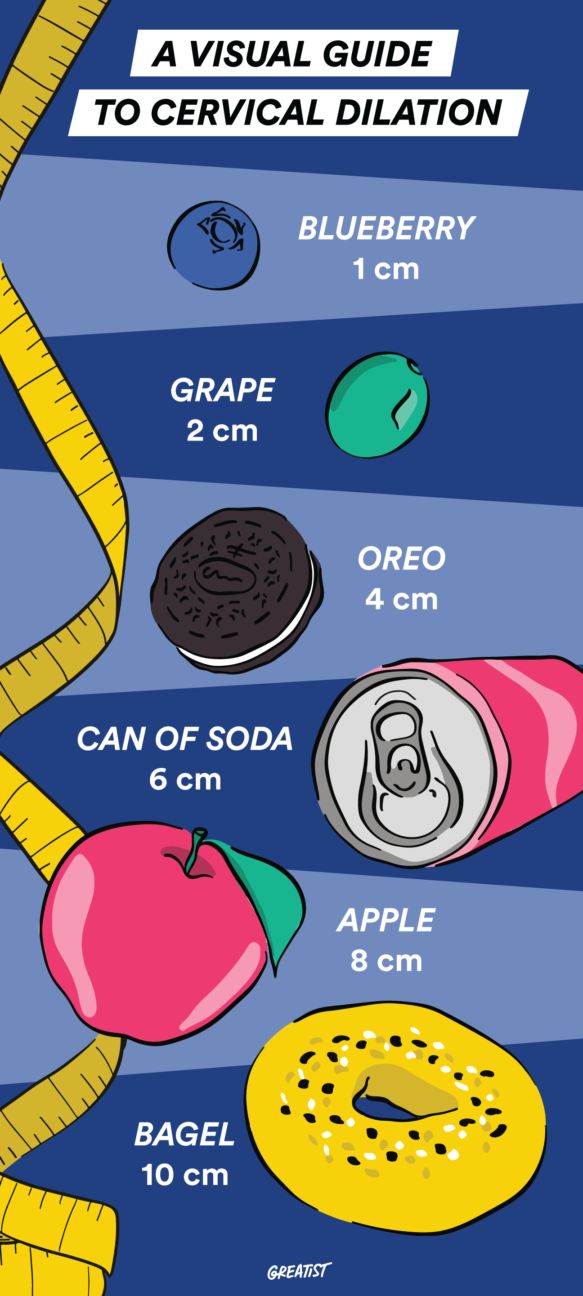Learn how to dilate faster during pregnancy. Understanding your cervix and the factors that influence dilation can help you feel more prepared for labor. Discover tips to ease the process and ensure a smoother delivery.
Being pregnant means you’re about to get intimately familiar with your parts, especially the cervix. So get comfy and let’s begin with the basics.
The mighty cervix
The cervix is the tube-shaped lower portion of the uterus. It’s narrow, fibrous, and usually tightly closed so that there’s just a small hole at the bottom end.
The cervix helps menstrual fluids flow out and sperm flow in, like a hallway between the vagina and uterus.
Cervical dilation, wha?
Let’s imagine one of those little swimmers made it through and a baby’s on the way. Woohoo!
When the body’s ready to birth that babe, labor begins. The cervix widens, aka cervical dilation, and the birthing process begins.
Those pesky contractions moms-to-be experience when in labor aren’t just to make you question your life choices, they’re meant to stretch the cervix gradually.
In order for that tiny human to emerge, the cervix will need to widen to 10 centimeters.
Honorable mention: Cervical effacement
Effacement and dilation are different processes that happen at the same time. Effacement refers to the thinning, softening, and shortening of the cervix. The more effaced the cervix is, the faster dilation happens.
Let’s get this moving along
We get it, being pregnant isn’t “all that and a jar of pickles.” But can you speed up cervical dilation and shorten labor? The answer is a definite maybe. Various techniques may speed things up.
Before you attempt to shift your dilation into turbo gear, check with your doctor to make sure that it’s safe for you and the baby.
DIY approaches to use with caution
Important note
It’s never safe to try to induce labor on your own without the explicit approval of your doctor. Always check in with them prior to any methods of inducing labor or you’ll risk harming your baby. When in doubt, don’t try it out.
These DIY methods don’t only apply to dilation, but to inducing labor in general. With your doctor’s approval only, you can give these methods a try in the comfort of your own home. Keep in mind that not all of them have great scientific support.
- Gentle movement. Shake your groove thang. Or just walk around a bit. Mild activity can get your blood pumping, which can help kick up the dilation pace. Plus, applying shifting pressure (hello, there’s a baby jostling around in there!) to the cervix can encourage the labor process.
- Stability ball. Good for more than collecting dust bunnies, that big, inflatable space-suck in the corner may be the answer. Gently rolling around on one can loosen pelvic muscles.
- Relaxation. The key here is stress busting. Activities like meditation or breathing exercises can relieve tension and signal your muscles to chill out. Laughter is also effective at easing stress and physical tension.
- Sex. Sexual activity won’t induce early labor, but it also doesn’t hurt to try in lower-risk pregnancies.
- Nipple stimulation. When the nips are roused, your body releases oxytocin, a hormone that invokes contractions.
- Miscellany. Spicy food, acupuncture, and acupressure have previously been rumored to stimulate labor, but they lack scientific support.
Doctor tactics
If the doctor feels it’s the right move, one of these methods might be used.
- Mechanical devices. The most popular and successful mechanical approach is using a cervical balloon, such as a Foley bulb. Your doctor inserts this balloon-like device into the uterus and fills it with saline. The resulting pressure should inspire the cervix to dilate.
- Medication. The hormone prostaglandin may be applied onto the cervix or into the vagina. It triggers cervical softening and labor contractions. If it doesn’t do the trick, your doctor may try an oxytocin drip.
- Membrane stripping. This technique is used if your amniotic sac is unbroken. Your doctor will brush a finger across the membranes attached to the sac, which prompts the uterus to secrete prostaglandin.
A word of caution
Don’t try to hasten dilation if your due date still looms in the future. Let Mother Nature work her magic. Your body is busy doing its own prep work for the upcoming birth.
No matter what you try, the cervix won’t go from 0 to 10 instantaneously. The loosening and widening happen over a period of time.
So, the big day has arrived!
Here are a few basic facts to keep in mind
- Labor has three stages. There are key milestones that characterize each stage.
- The length and nature (read: pain level) of labor is different for every woman.
- Women who’ve already given birth may have quicker, easier, or less painful deliveries.
Stage 1 is comprised of two parts: the latent phase and the active phase. The cervix will efface and dilate in this part of the show.
Latent phase
During this phase, there might not be much happening. What you can expect:
- Contractions might be weak or irregular.
- There could be bloody, mucusy discharge.
- You may experience cramps or backache.
- Your water may or may not have broken.
Basically, your cervix is starting to get ready (stretching and softening) for prime time. Many women hang out at home during this opening act.
Active phase
With a name like “active phase” you know this portion of the program is going to be interesting. It doesn’t disappoint.
In this phase, contractions become more frequent and intense. By this point, most women have likely boogied on over to the hospital. It’s nice to be settled in before the headline act.
How long does stage 1 last?
Typically lasting for 12 to 19 hours, this is the longest stage of labor. However, it isn’t uncommon for early labor (the latent phase) to take anywhere from mere hours to weeks. Yes, that’s weeks with an “s”…
First-time moms may move through this stage at a slower rate than moms with a brood waiting at home. From your doctor’s point of view, this stage ends when the cervix has dilated to the full 10 centimeters.
Baby delivery
This is the part you’ve been waiting many long months for: delivery. At the end of this stage, your womb mate will be out and in this world as its own being. Exciting stuff!
In Stage 2, the baby is positioning itself for the actual birth. Contractions help move the baby down toward the pelvis. When the baby is low enough, and all set for the journey through the birth canal, it’s push time.
Lots of women feel the impulse to push throughout this stage, even before the baby is ready to be born. So it’s important to take cues from the doctor to make sure pushing is done at the right time. Pressure on the rectum and burning or stinging sensations in the vagina are also really common during delivery.
An epidural may prevent or dull these super-lovely sensations. Relaxation and breathing exercises can be helpful too.
How long does stage 2 last?
Simply put: It lasts as long as it lasts.
The amount of time for delivery is a very broad range. Eager babies may come out after just a few minutes. Others may opt for a leisurely-paced, hours-long delivery.
In stage 2, contractions are spaced a few minutes apart and last for about 1 to 1.5 minutes each. While only pushing during the contraction, your doctor may be able to estimate how quickly your delivery is progressing. Newbie moms and those who opted for an epidural usually take longer.
Afterbirth
Congrats! You’ve made it through a marquee show and your child is born. You’re now in stage 3, arguably the stage of labor with the least PR.
With a baby vacated from your uterus, you’ll be able to attend the encore event. Your body will deliver the afterbirth. This includes the placenta and membranes that protected and nourished the fetus.
How long does stage 3 last?
Soon after your offspring has sprung from your loins, a second round of contractions begins. Joy! This is supposed to happen. Your doctor will coach you through expelling the afterbirth.
Stage 3 takes between 5 to 30 minutes. Nursing your newborn can speed it up. This stage — and the whole labor process — are finished once you’ve delivered the afterbirth.
Childbearing is in the rear-view mirror. Parenting is in full, sleepless swing. Enjoy this time. Bond as a family. Let your body recuperate.
Pregnancy and labor are major body-changing events. After childbirth, it takes 6 weeks — give or take — for the uterus and cervix to return to prepregnancy size, shape, and position.
The cervix, a fibrous cylindrical portion at the bottom of the uterus, is the diva of the female reproductive system. She calls many of the shots, like when to dilate, how much, and at what rate.
There are three phases to labor:
- Stage 1: cervical effacement and dilation
- Stage 2: deliver baby
- Stage 3: deliver placenta
Most often, the cervix will dilate as a natural part of the labor process. Contractions are the body’s way of helping the cervix to stretch.
When the cervix is fully dilated, it will be about 10 centimeters in diameter. This is wide enough for a baby to pass through.
There are several potential ways to try to speed up cervical dilation. Always check with your doctor before attempting to accelerate labor artificially. Timing of delivery is super important and can be harmful if done too early.
Pregnancy and labor impact the body significantly. After childbirth, the reproductive organs need time to return to their original sizes and positions.


